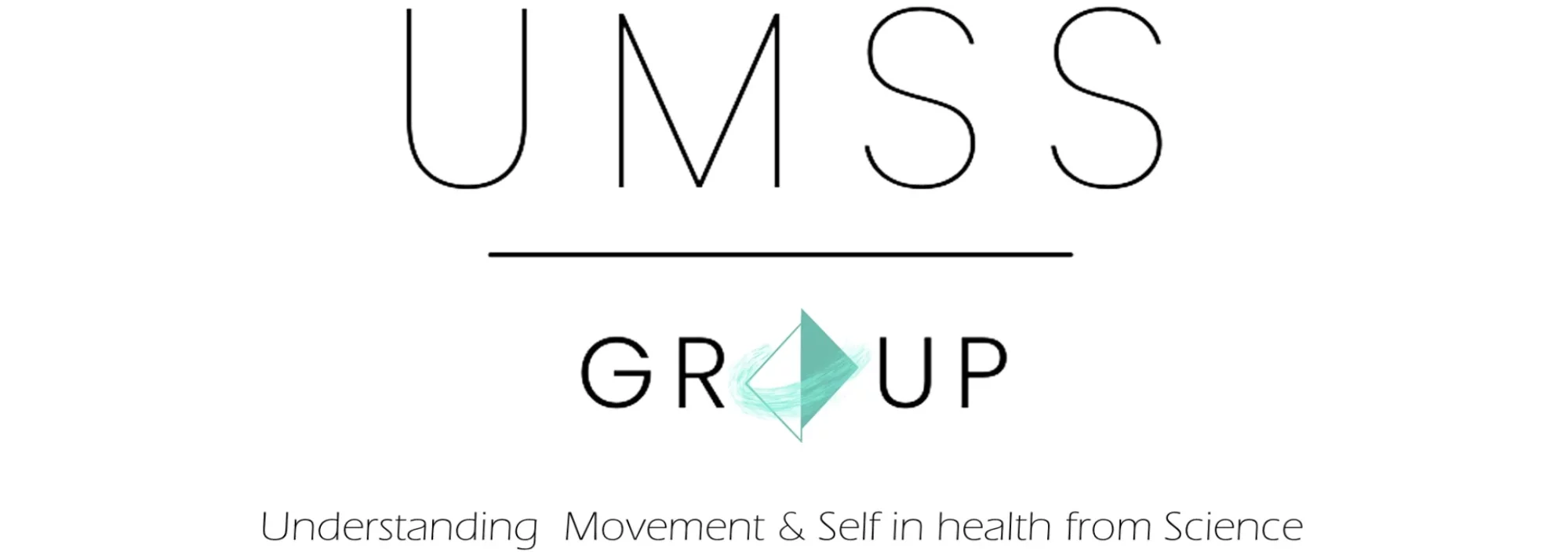
May 12th marks the International Fibromyalgia (FM) and Chronic Fatigue Syndrome (CFS) Awareness Day. The research focus of one doctoral candidate within our group is centered on the effectiveness of mindful exercise in dysautonomias. Given that one consequence of these syndromes is the dysregulation of the autonomic nervous system (ANS), this blog post is dedicated to exploring the use of such therapies and the encompassing biopsychosocial approach in FM and CFS.
The etiology of FM and CFS remains elusive to date. The absence of a specific biomarker and reliance on clinical diagnosis has historically led to misconceptions among healthcare professionals, attributing these conditions to psychological issues, maladaptive behaviors, or even fabrication (Pheby DFH et al. 2020). Consequently, diagnostic labels have been misapplied, potentially resulting in misdiagnoses or undiagnosed cases (Geraghty KJ & Blease C. 2019). This lack of understanding among the medical community has prompted some specialists to vehemently reject the biopsychosocial approach in these pathologies, arguing that it exacerbates patient invalidation, dissatisfaction, and may even lead to decisions or adoption of therapies that worsen their health status (Geraghty KJ & Blease C. 2019; Campion P. 2016). However, this stance overlooks the fact that the biopsychosocial approach encompasses a significant biological component and does not seek to invalidate patients’ symptoms or argue against the existence of an underlying physiological cause. Rather, it aims to consider the psychological and social spheres of the individual, employing a comprehensive approach that acknowledges the patient’s context and reality, as recommended in the management of any chronic condition (Wade DT & Halligan PW. 2017). It is especially pertinent in pathologies where underlying biological processes are not yet fully understood, and thus effective pharmacological treatments are lacking.
One physiological alteration accompanying FM and CFS is ANS dysregulation. While individual patients may exhibit tendencies towards hypo- or hyperactivation, it is evident in both cases that the system has lost its self-regulatory capacity and its ability to adapt activity in response to stimuli and stressors (Pinto AM et al. 2023). One method of objective assessment is through the measurement of vagal tone and heart rate variability (HRV). HRV, measured by the variation in heart rate between beats (RR intervals), serves as a marker for assessing the balance between the sympathetic and parasympathetic systems and the adaptive capacity of the ANS. Reduced HRV has been accepted as a neurophysiological marker of chronic stress. Furthermore, the close relationship between vagal activity and the Hypothalamic-Pituitary-Adrenal axis, the gut-brain axis, the immune system, and the functioning of vital organs such as the heart and vascular system underscores the long-term implications of HRV alterations on multiple physiological systems (Pinto AM et al. 2023; Kadota Y et al. 2010).
While we do not intend to imply that ANS dysregulations are the cause of FM and CFS, it is evident that addressing these dysregulations can significantly improve symptomatology and patient quality of life. Meditation, mindfulness, or consciousness training has been recognized in the literature as an effective tool in regulating ANS function (Brandmeyer T et al. 2019). Mindful exercise, characterized by an emphasis on bodily sensations, breathing, and movement awareness, has been proposed to have comparable effects to those of meditation (Pascoe MC et al. 2017).
Physical exercise is proposed as a fundamental component of treatment for these patients, endorsed by experts and clinical practice guidelines (Geneen LJ et al. 2017; NICE 2021). Apart from modulating pain intensity, exercise plays an essential role in maintaining patient autonomy and increasing self-efficacy. Experts also caution against potential adverse effects of exercise. FM and particularly CFS are characterized by symptom exacerbation following exertion beyond their limits. Therefore, a pacing strategy is recommended for exercise prescription, which entails avoiding exceeding the individual’s limits to prevent post-exertional symptom aggravation (Sanal-Hayes NEM et al. 2023).
Mindful exercise is considered low-intensity exercise, perfect for initiating a rehabilitation process (Cagas JY et al. 2022). Moreover, the focus on bodily sensations and heightened awareness assists patients in better perceiving their fatigue levels and the effort expended. This facilitates adherence to pacing recommendations and helps prevent symptom exacerbation, a scenario undesirable for any patient.
In light of the above, mindful exercise emerges as a promising therapeutic strategy for patients with FM and CFS. We at UMSS continue to investigate this topic to validate our hypotheses and provide scientific evidence for these practices.
Bibliography
- Pheby DFH, Araja D, Berkis U, Brenna E, Cullinan J, de Korwin JD, Gitto L, Hughes DA, Hunter RM, Trepel D, Wang-Steverding X. The Development of a Consistent Europe-Wide Approach to Investigating the Economic Impact of Myalgic Encephalomyelitis (ME/CFS): A Report from the European Network on ME/CFS (EUROMENE). Healthcare (Basel). 2020 Apr 7;8(2):88. doi: 10.3390/healthcare8020088. PMID: 32272608; PMCID: PMC7349118.
- Geraghty KJ, Blease C. Myalgic encephalomyelitis/chronic fatigue syndrome and the biopsychosocial model: a review of patient harm and distress in the medical encounter. Disabil Rehabil. 2019 Dec;41(25):3092-3102. doi: 10.1080/09638288.2018.1481149. Epub 2018 Jun 21. PMID: 29929450.
- Campion P. Chronic fatigue syndrome: is the biopsychosocial model responsible for patient dissatisfaction and harm? Br J Gen Pract. 2016 Oct;66(651):511. doi: 10.3399/bjgp16X687229. PMID: 27688495; PMCID: PMC5033282.
- Wade DT, Halligan PW. The biopsychosocial model of illness: a model whose time has come. Clin Rehabil. 2017 Aug;31(8):995-1004. doi: 10.1177/0269215517709890. PMID: 28730890.
- Pinto AM, Luís M, Geenen R, Palavra F, Lumley MA, Ablin JN, Amris K, Branco J, Buskila D, Castelhano J, Castelo-Branco M, Crofford LJ, Fitzcharles MA, Häuser W, Kosek E, Mease PJ, Marques TR, Jacobs JWG, Castilho P, da Silva JAP. Neurophysiological and psychosocial mechanisms of fibromyalgia: A comprehensive review and call for an integrative model. Neurosci Biobehav Rev. 2023 Aug;151:105235. doi: 10.1016/j.neubiorev.2023.105235. Epub 2023 May 18. PMID: 37207842.
- Kadota Y, Cooper G, Burton AR, Lemon J, Schall U, Lloyd A, Vollmer-Conna U. Autonomic hyper-vigilance in post-infective fatigue syndrome. Biol Psychol. 2010 Sep;85(1):97-103. doi: 10.1016/j.biopsycho.2010.05.009. Epub 2010 Jun 2. PMID: 20678991.
- Brandmeyer T, Delorme A, Wahbeh H. The neuroscience of meditation: classification, phenomenology, correlates, and mechanisms. Prog Brain Res. 2019;244:1-29. doi: 10.1016/bs.pbr.2018.10.020. Epub 2019 Jan 16. PMID: 30732832.
- Pascoe MC, Thompson DR, Ski CF. Yoga, mindfulness-based stress reduction and stress-related physiological measures: A meta-analysis. Psychoneuroendocrinology. 2017 Dec;86:152-168. doi: 10.1016/j.psyneuen.2017.08.008. Epub 2017 Aug 30. PMID: 28963884.
- Geneen LJ, Moore RA, Clarke C, Martin D, Colvin LA, Smith BH. Physical activity and exercise for chronic pain in adults: an overview of Cochrane Reviews. Cochrane Database Syst Rev. 2017 Jan 14;1(1):CD011279. doi: 10.1002/14651858.CD011279.pub2. Update in: Cochrane Database Syst Rev. 2017 Apr 24;4:CD011279. PMID: 28087891; PMCID: PMC6469540.
- NICE. NICE. Overview | Myalgic encephalomyelitis (or encephalopathy)/chronic fatigue syndrome: diagnosis and management 2021.
- Sanal-Hayes NEM, Mclaughlin M, Hayes LD, Mair JL, Ormerod J, Carless D, Hilliard N, Meach R, Ingram J, Sculthorpe NF. A scoping review of ‘Pacing’ for management of Myalgic Encephalomyelitis/Chronic Fatigue Syndrome (ME/CFS): lessons learned for the long COVID pandemic. J Transl Med. 2023 Oct 14;21(1):720. doi: 10.1186/s12967-023-04587-5. PMID: 37838675; PMCID: PMC10576275.
- Cagas JY, Biddle SJH, Vergeer I. Why do people do yoga? Examining motives across different types of yoga participants. Int J Sport Exerc Psychol. 21 de junio de 2022;1-21.

